Recently, a small team from the Redline Home Guard set out to explore another fascinating stretch of Britain’s wartime defences – walking the Stop Line section from Crookham Wharf along the Basingstoke Canal. This was a relaxed but rewarding day discovering the remains of the fortifications that once formed part of the GHQ defence network.

Tracing Britain’s 1940 Defences
This section of the Stop Line formed part of the extensive defensive system built in 1940, intended to slow or halt any invading forces advancing inland from the south coast. The landscape still bears many reminders of those anxious months: anti-tank obstacles, concrete cylinders, pillboxes, and machine-gun emplacements can all still be found hidden among the trees and hedgerows along the canal.


The proximity of the Basingstoke Canal meant that this stretch of the line could be easily defended, using the waterway itself as a natural anti-tank barrier, reinforced with man-made defences on both banks.
A Unique Find
Among the many structures we located, one pillbox stood out in particular. Built into a sloping bank beside the canal, it features a set of internal stairs leading up into the fighting compartment – something none of us had encountered before. This unusual design is a great example of how local conditions influenced the way each defensive position was constructed.

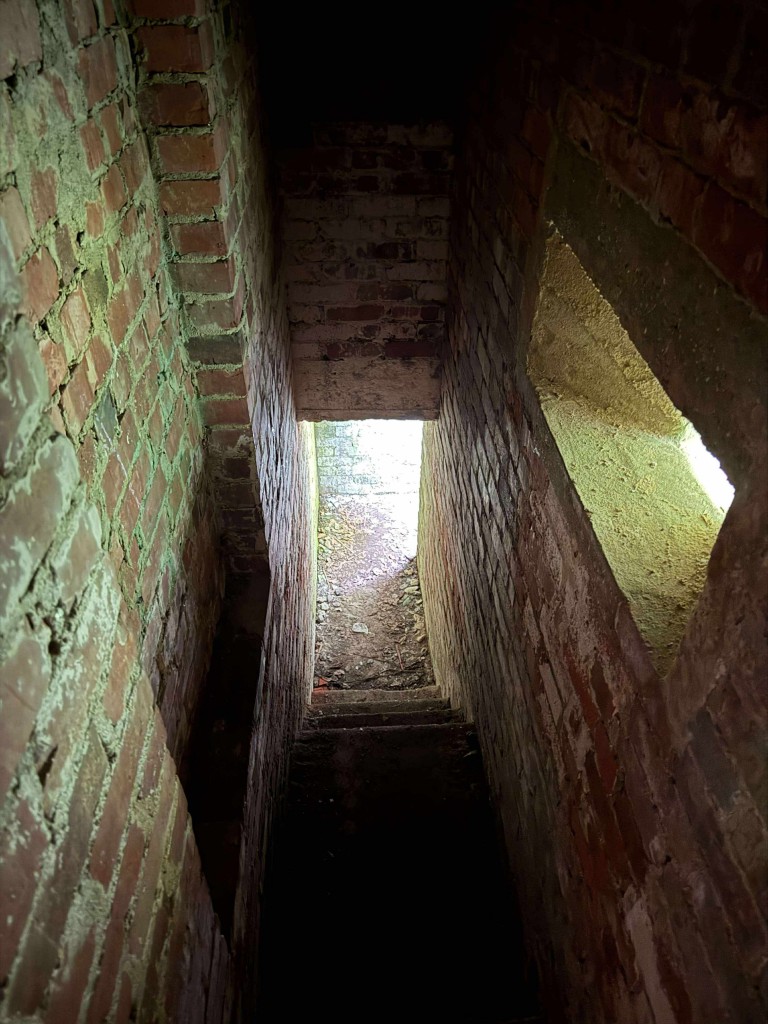
We also found a number of well-preserved anti-tank “dragon’s teeth” and cylindrical obstacles, reminders of the formidable barriers that once criss-crossed this part of the countryside. Despite the passage of time, many of these features remain remarkably intact. “Dragon’s teeth” are reinforced concrete anti-tank obstacles, usually arranged in rows of pyramidal blocks designed to halt or slow advancing armour. They were most often positioned where an anti-tank ditch met another barrier, such as a road, bridge, or waterway, closing gaps that tanks might otherwise exploit. By forcing enemy vehicles to stop or manoeuvre, they exposed them to defensive fire from nearby pillboxes or anti-tank positions. Along the Stop Line, dragon’s teeth ensured the defensive network remained unbroken, creating a continuous obstacle line across both natural and man-made features. One cylinder within a large group was unique in that it was the only one made of brick, the others all being formed from concrete.
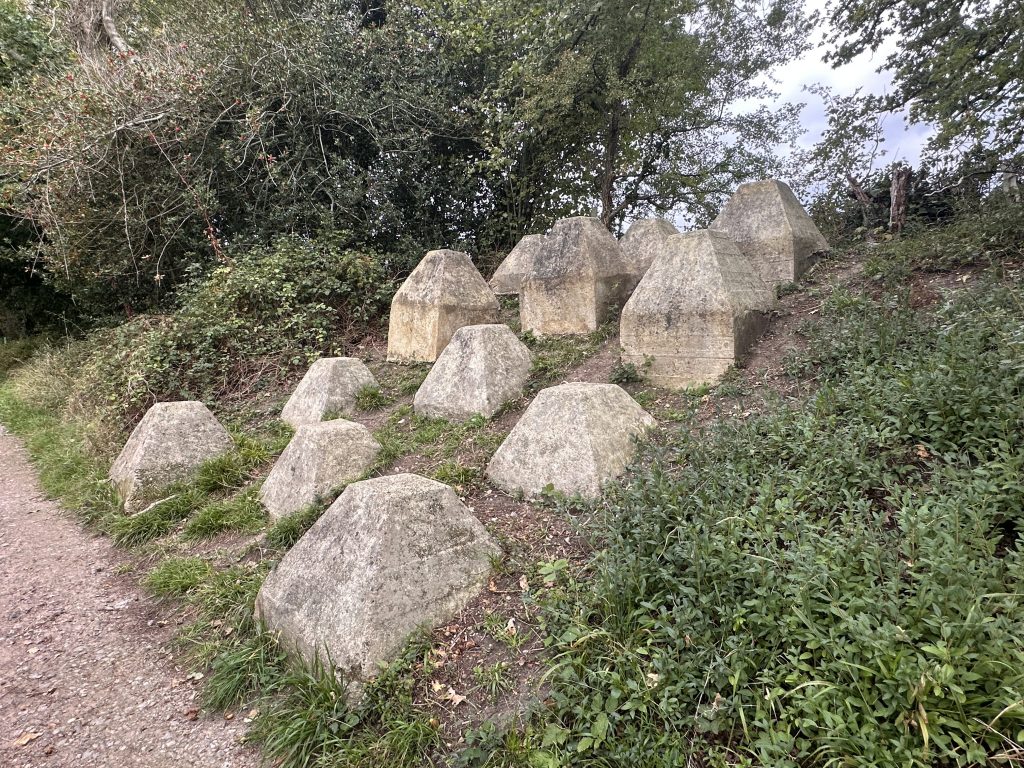
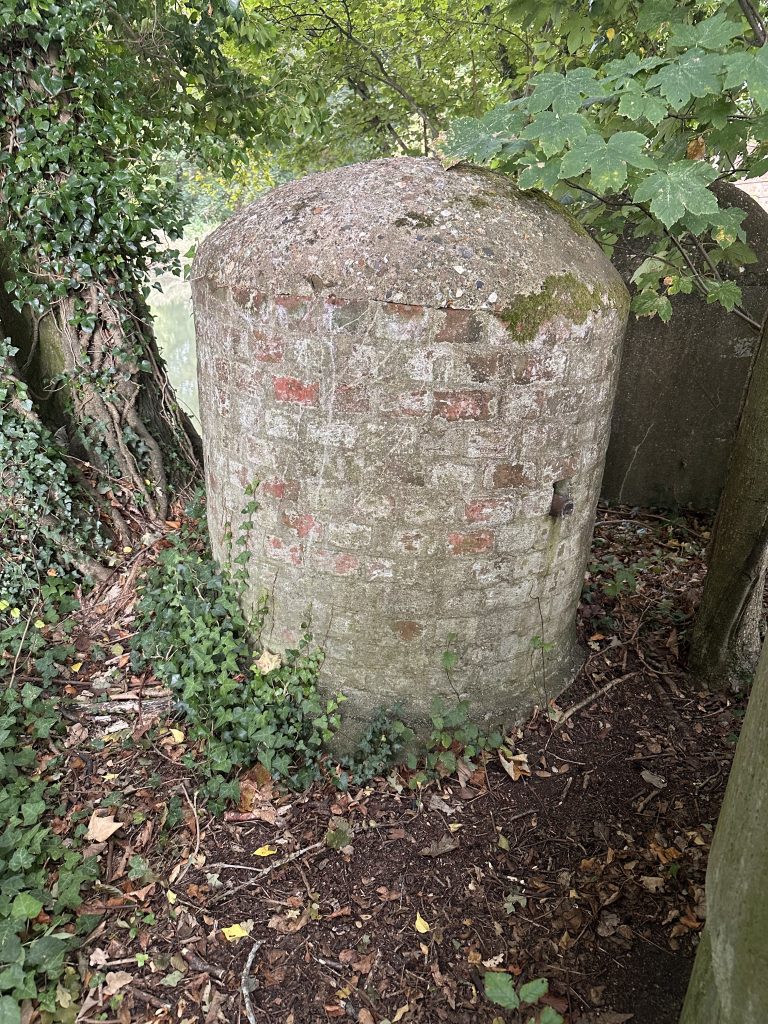
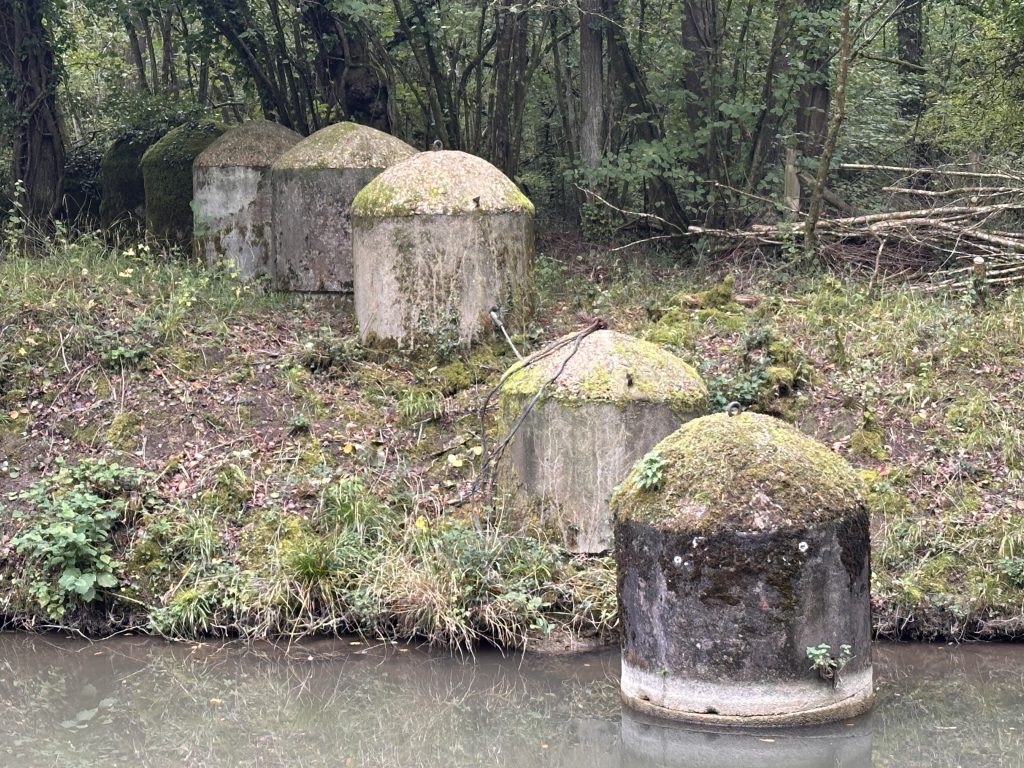
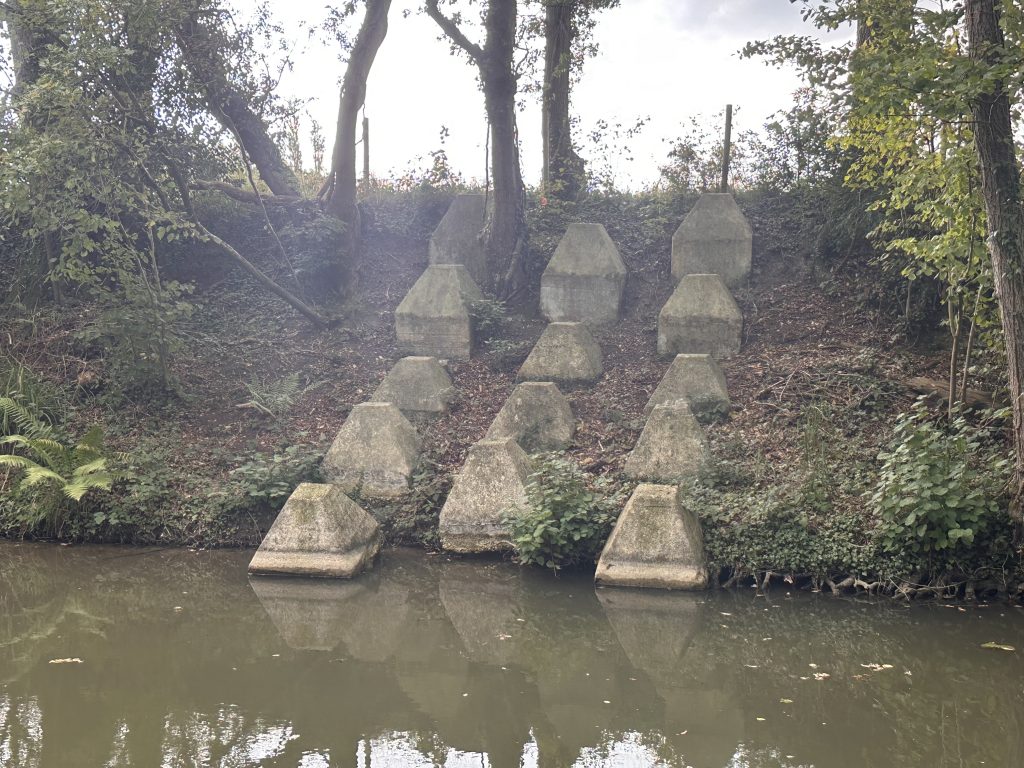
Along the route we also encountered a rare line of mine sockets on Blacksmith’s Bridge, Dogmersfield. Each socket features a solid circular base around four inches deep, designed to hold a round, “biscuit-tin” style spider mine. When not in use, the recesses would have been sealed with wooden plugs, although none now remain.
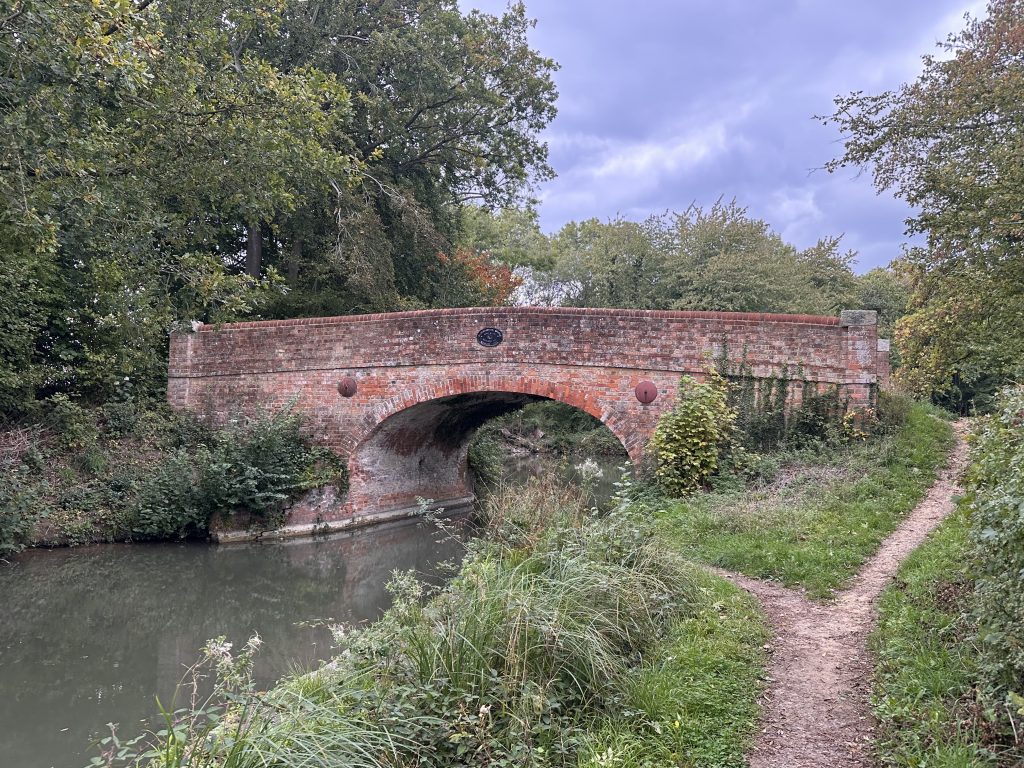
The sockets are arranged in a carefully planned pattern across the bridge to provide maximum coverage along its width. Once in place, the mines would have rested securely in their holders, and the force of their detonation from the solid base would have been sufficient to disable or damage any light tracked vehicle or tank attempting to cross. It’s a fascinating example of how thoroughly even small structures were prepared to resist armoured attack as part of Britain’s wartime defences.

A Visit to Hook Spigot Mount
While in the area, we also took the opportunity to visit the site of a Spigot Mortar emplacement at Hook. The base pivot and fittings are still visible, giving a good sense of how these weapons were positioned to defend key crossings and approaches. We’re hoping to return to this site in the near future – this time bringing along our own Spigot Mortar to see how it fits and take some reference photography.
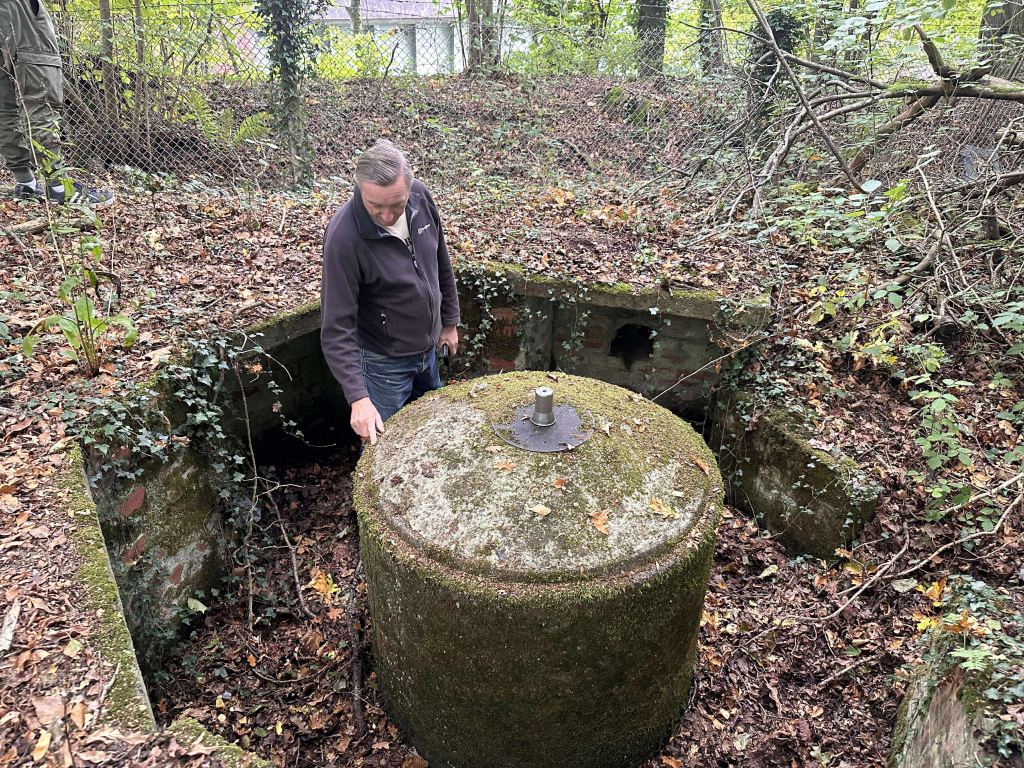
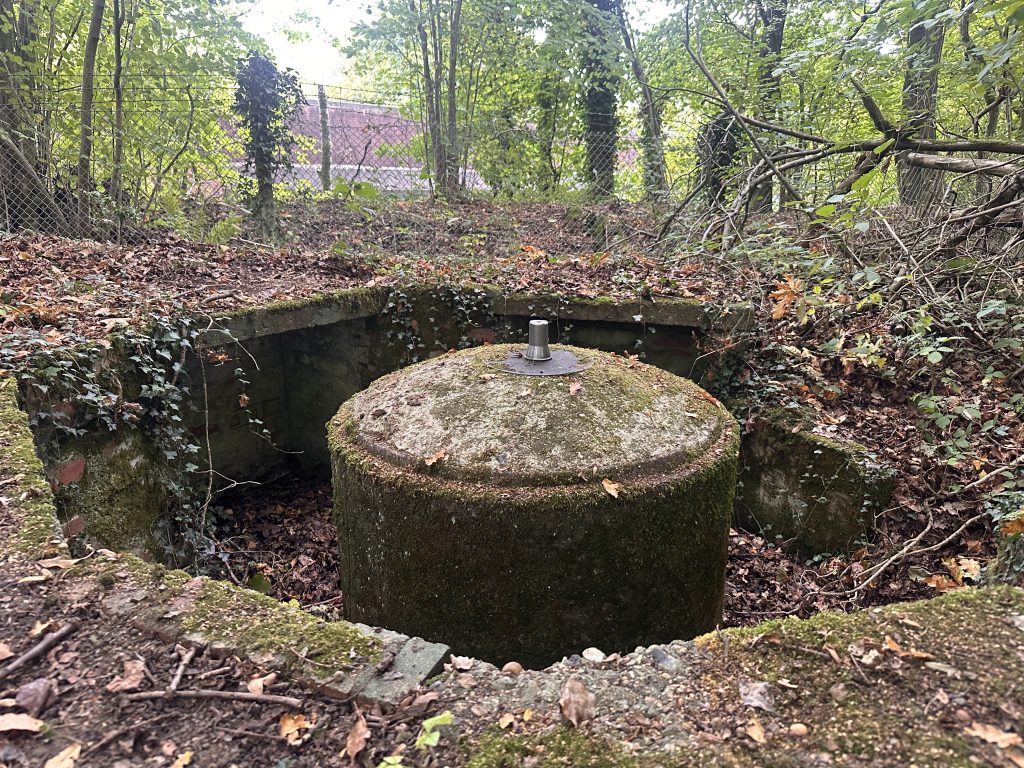

Continuing the Research
Walks like this are an invaluable part of our ongoing research into the GHQ Stop Line and the network of local defences that once protected the area from the threat of invasion. Seeing the surviving structures in person gives real insight into the scale of the effort undertaken during 1940 and helps us interpret them more accurately for our displays and public events. Each trip adds another piece to the puzzle of how Britain prepared to defend itself – and reminds us just how much of that story still survives quietly in the landscape today.



No responses yet